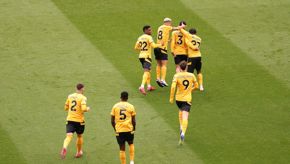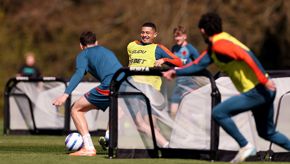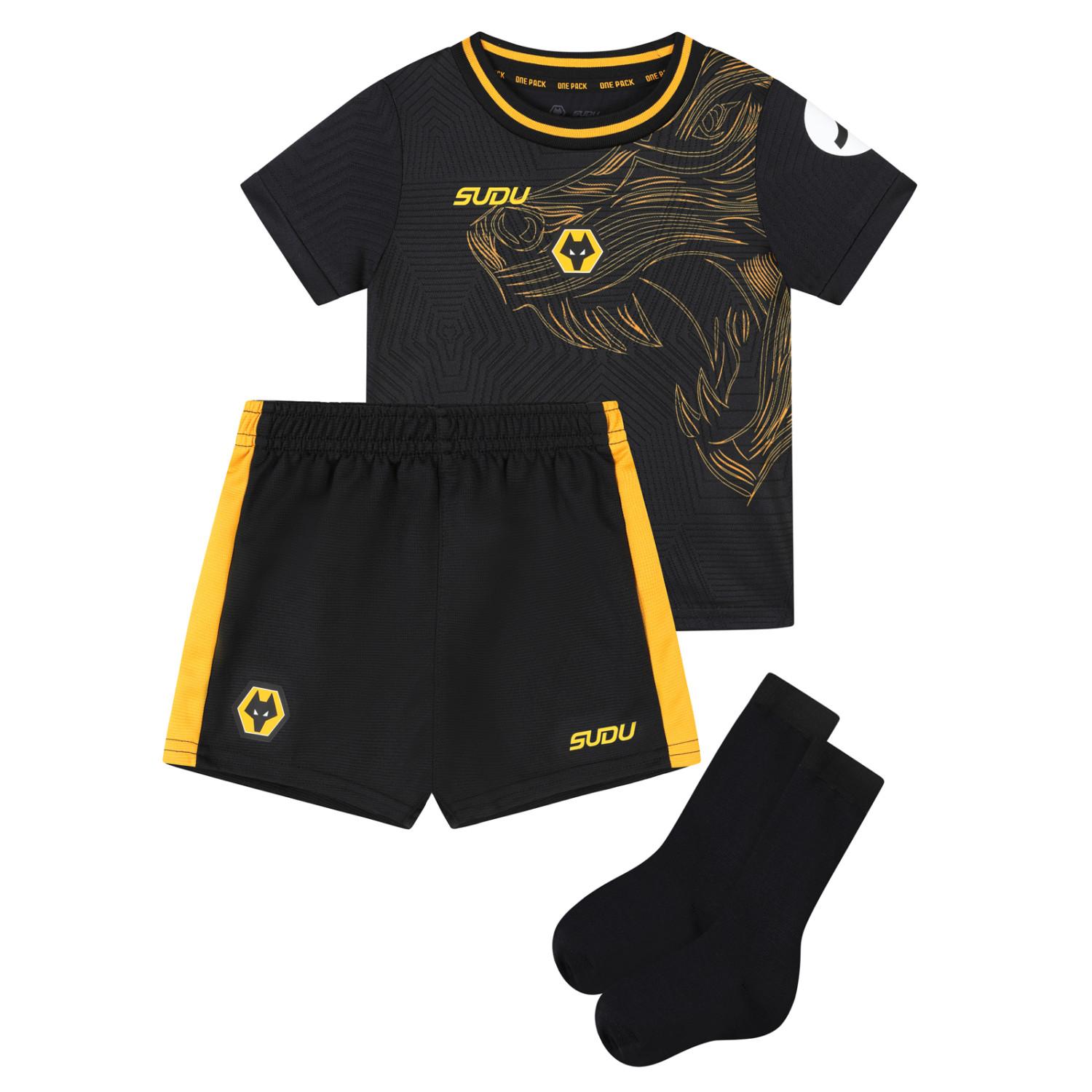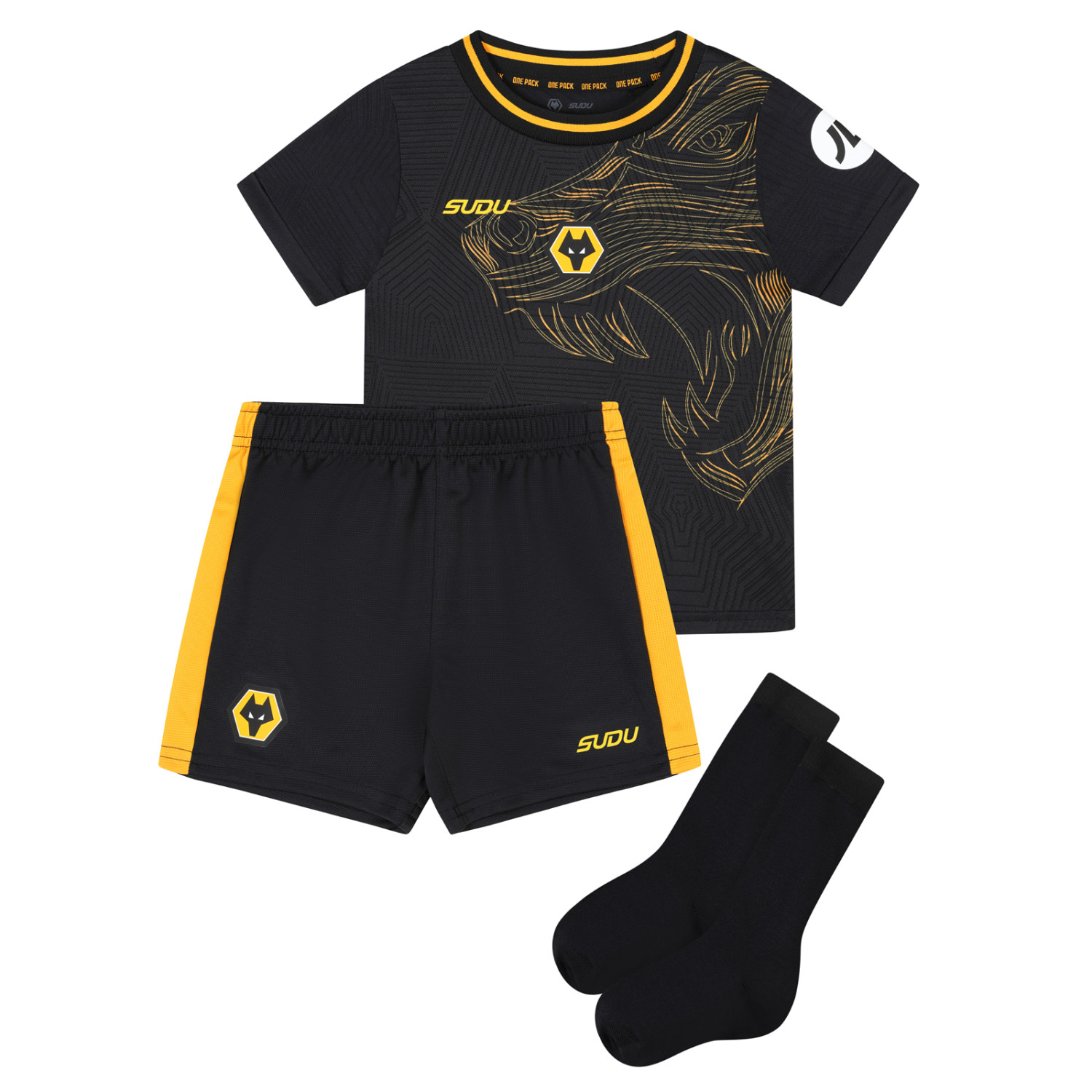Alan Cotterell’s career has been one of blueprints, beams and memories, but his contributions to the football world have left a permanent mark on Wolves and the club’s iconic home, Molineux.
Last Sunday, Alan celebrated his 90th birthday back at the stadium he had so carefully designed more than 30 years previously.
After dining at the restaurant which bears the name of Sir Jack Hayward, a man who would end up becoming a close friend to the esteemed architect, he received a special framed ‘Cotterell 90’ shirt as a gift from the club, before being treated to a tour of the stadium.
As a lifelong fan and the creator behind Molineux's transformation in the early 1990s, Alan reflected on his journey and the experiences that have defined his extraordinary career.
Born in Wolverhampton in 1934, Alan grew up in Penn and developed an early love for Wolves. His early education at Woodfield Avenue School, Wolverhampton Grammar School, as well as his involvement in a youth group at Beckminster Methodist Church – which his father helped to build – instilled in him the values of community, service and ethics which would became a yardstick for his work.
Alan’s professional journey began with designing greyhound stadiums, including the renowned Hall Green in Birmingham. But it was a surprising phone call before the Christmas of 1990 and a pivotal project in his hometown which would shape the latter part of his architectural career.
***
Following the takeover of Sir Jack, Wolves were facing the daunting prospect of rebuilding Molineux.
Faced with taking on a dilapidated mess of what was once an iconic football stadium, talks had begun in redeveloping the ground, when an article appeared in local newspaper, the Express & Star, estimating the cost of the rebuilt at an eye-watering £15 million.
For Alan, this was unacceptable.
“The site of the stadium is owned by the council, not by Wolves,” Alan explained. “The Express & Star had put a very unfortunate article in the newspaper, which put together an estimate of about £15 million to do the stadium, and I was horrified. I thought it was a stupid price.”
Alan called Jack Harris, club chairman and vice president, just days before Christmas. “Jack said to me, ‘It’s dreadful, Alan. I think we better have a chat.’ Well, it was Mr Cotterell and Mr Harris at that stage, but we quickly became Alan and Jack!
“He said, ‘Could we get together?’ I said, ‘Yes, of course. When?’ ‘How about tomorrow morning?’ Jack replied – the day before Christmas Eve! I obviously said yes, and I went round to see him in the old stadium.
“I said, ‘Give me Christmas, and I’ll come back to you with some ideas’. Veronica [Alan’s wife] knows all about that Christmas, because she didn’t see me once!”
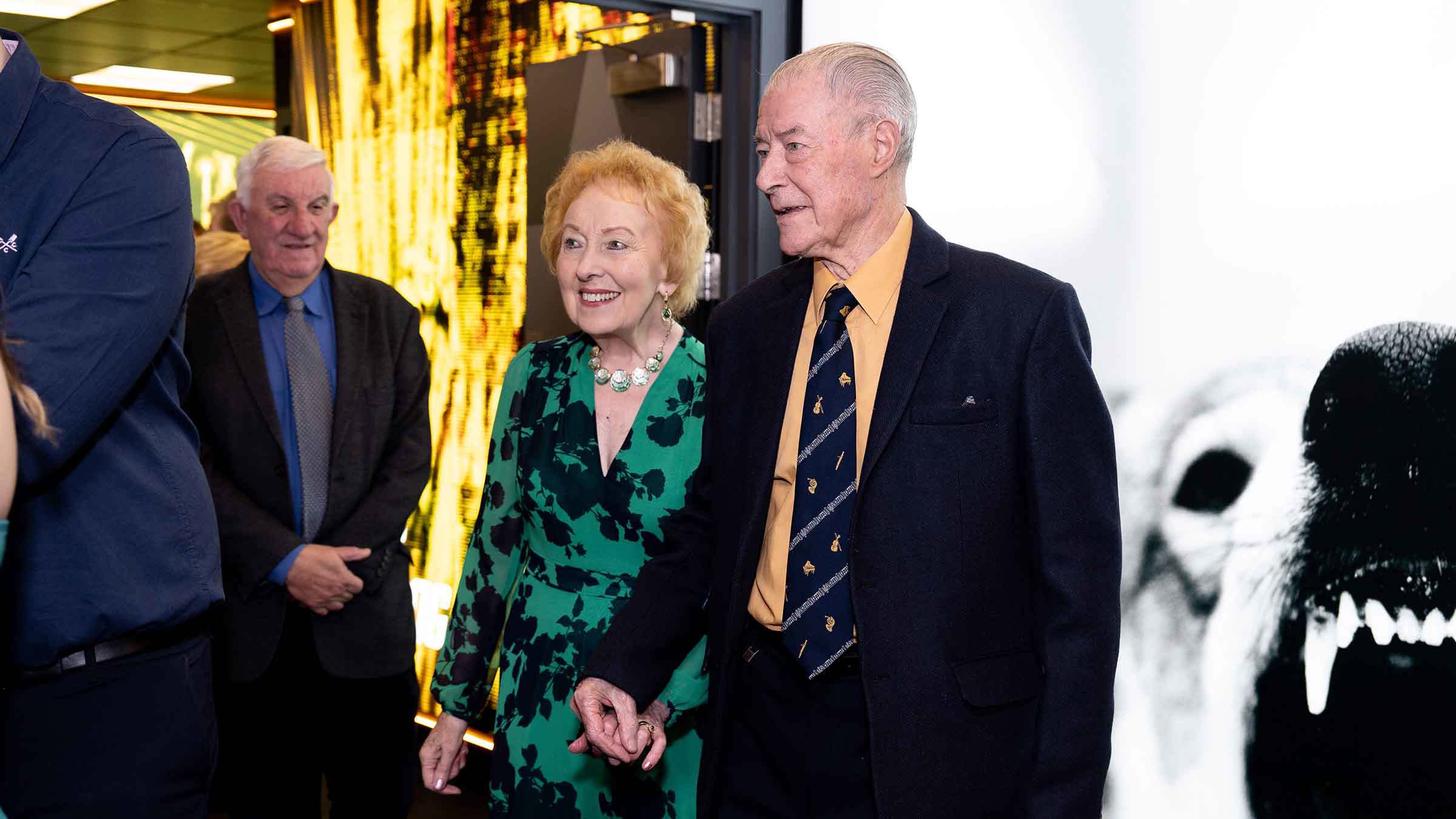
The meeting was transformative. Alan proposed a phased redevelopment plan, enabling the stadium to maintain a 24,000 capacity while addressing critical needs.
“I got out a piece of A4 which I used to sketch a way we could do the phasing to ensure we could maintain the capacity, as well as a way we could accommodate disabled supporters – because that’s one of the things Wolves have always been good at. We were actually awarded ‘best disabled stadium in the country’ when we first opened.
“Jack Harris liked my ideas and he quickly got on the phone. What he’d done was speak to Sir Jack, who was in the Caribbean at the time, and he said to me, ‘Right, we’ll do it. Would you be our architect?’ I said, ‘Yes, it would be my pleasure.’ I was delighted because I knew we were going to go into a recession in 1990 and thought this would give me at least three years of work for me and my team, and I can keep my staff going.
“They asked me what my fee was going to be and I thought, ‘About two thirds of a million?’ And they were like, ‘Right, fine, get on with it!’ And that’s how it started.”
Alan’s relationship with Sir Jack Hayward was central to the project’s success. Sir Jack’s vision extended beyond bricks and mortar – he wanted a stadium which would serve the community.
“That’s the one thing Sir Jack asked me for,” Alan recounted. “That was vitally important to him, because as a football club, we are supposed to serve the local community, and also, everything needs to be made locally.
“I did get into trouble with Sir Jack about one thing because we weren’t using local paint on the siteworks. Sir Jack wanted us to use Manders paint on everything, but we were using Dulux to paint them!
“Fortunately, we managed to source everything locally, apart from one item and that was the beam which expanded over the length of the North Stand – which has been rebuilt since. The local steel people couldn’t make it that length, so we had to go to Germany to get it, but everything else was made locally in Wolverhampton. That was a big priority for Sir Jack, everything had to be local and help local people. He was a marvellous man.”
However, the project wasn’t without its risks. Alan took full responsibility for the stadium’s construction, ensuring every detail met the highest standards. “I oversaw every part of it. I even went up on the framework to ensure the lighting rigs fitted and supervised the whole lot.
“I remember, as a young architect, going up the former floodlight towers, whose construction I had arranged, with a clipboard in my mouth – forget health and safety – up the ladders to the top, and I looked through the slotted platform and thought, ‘Crickey, I’m up high!’ I could see all these little motor cars going by down Waterloo Road underneath me, and it was a scary moment!
“But unless it was a small job which I could send one of my other staff to, I would oversee everything my team were involved in, and when it came to the stadium, I took full responsibility and liability for everything – which could have costed hundreds of thousands – and everything came back to me, so I had to make sure I oversaw every little thing.”
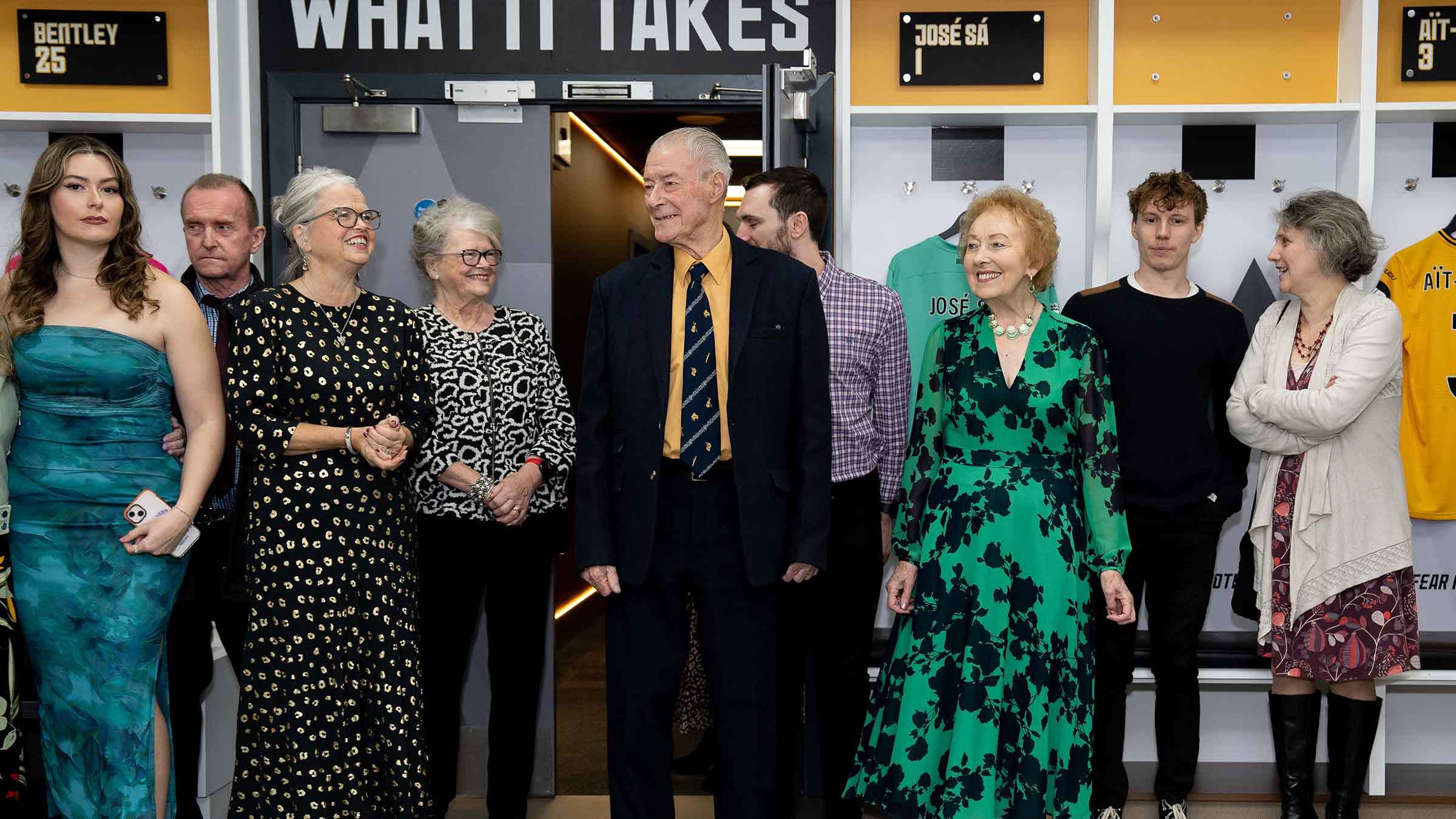
As well as wanting to make a sound business plan for Sir Jack and the club, which included corporate boxes suitable for matchdays as well as weekday meetings, and the main Hayward Suite including a raised square section in the ceiling to allow for a boxing ring, ensuring the stadium was one of the safest in the country was top of Alan’s priorities.
In the wake of the Hillsborough disaster, Alan worked with the FA and Lord Chief Justice Poppellwell to ensure Molineux and other new stadia met rigorous safety standards.
“Safety was at the top of my list of priorities for Molineux, absolutely.” Alan stressed. “It was the one thing which always worried me. One time, I raised the matter with Keith Pearson [then club secretary] because I was walking through the one stand and I saw a waste bin, not very big, but I thought, ‘That’s a big hazard’.
“That’s where my mind goes. If something like an explosion happened at Molineux, it wouldn’t just be national news, it would be international news. I thought if somebody put a small bomb or an explosive in there and it set off, it would be massive news.
“I spoke to Keith and told him my worries about the waste buckets that were around, and he said the stewards check them every time to see there’s nothing in. But I thought I’d do a test, so I put a little box in one of them – an unusual looking box – and watched and waited, and none of the stewards looked at it.
“I told Keith what had happened and he got all of the stewards into the room under the John Ireland Stand – as it was then – and he lectured the stewards that it must never happen again. But my mind can’t help thinking about things like this, so making the stadium as safe as possible was at the forefront of my designs.”
Alan’s fondest memories of creating modern Molineux were the friends he made along the way, while he also looks back fondly on the stadium’s grand opening and a visit from a very special guest.
“The relationships I had with a lot of the people involved at Wolves was absolutely brilliant. People such as Sir Jack, Jack Harris, Keith Pearson, John Ireland, Graham Hughes and even Billy Wright.
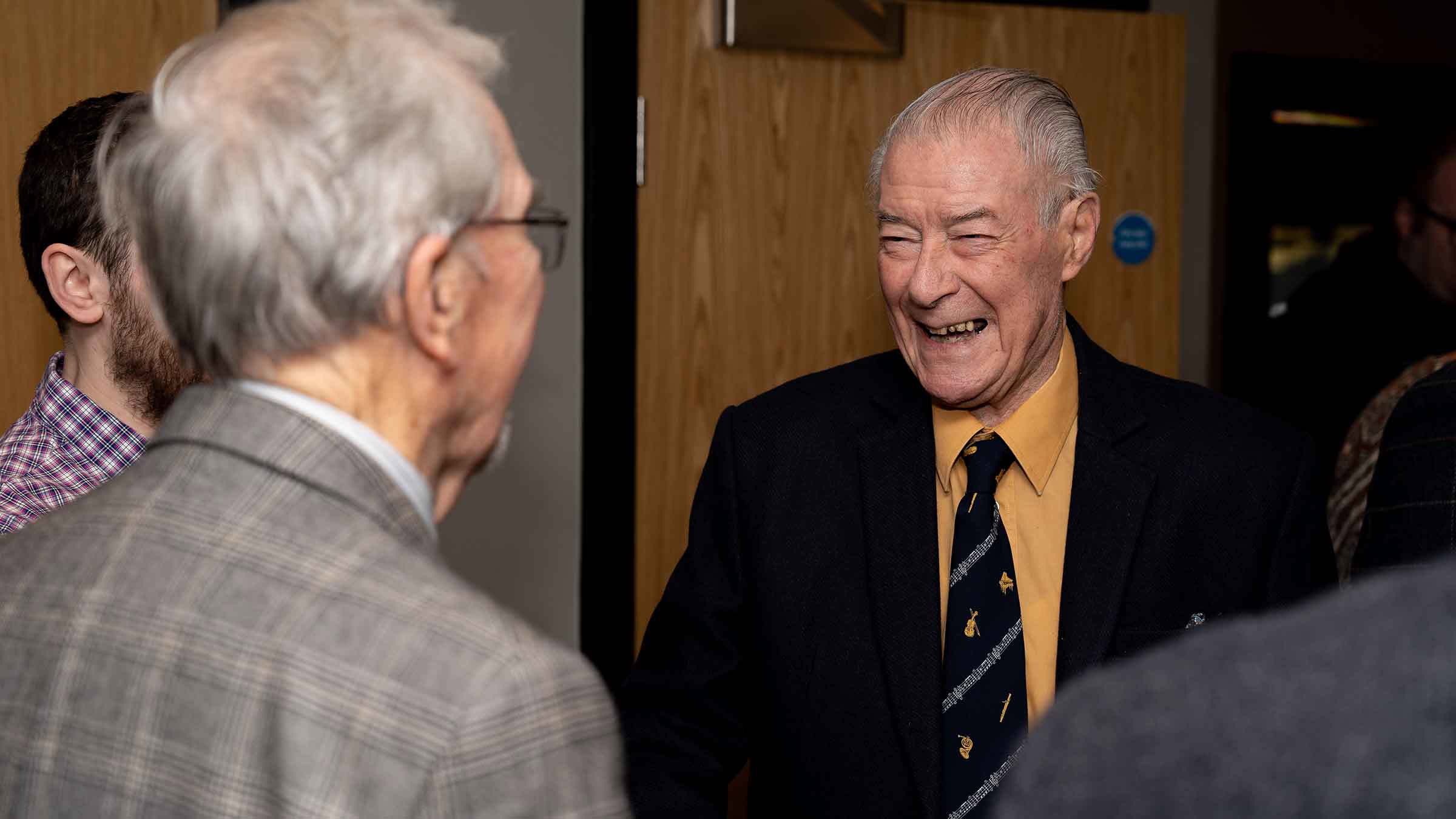
“I would sit next to Billy in the board meetings and he was an amazing man. Billy ended up becoming a very good friend of mine. There are so many people there who I became very good friends with and it was a wonderful experience. All my memories of working with the club are great.
“But it was fantastic when the Queen came up to open the stadium. She was introduced to me in the changing area on the way down to the pitch, and there was Sir Jack, Her Majesty, and myself.
“Sir Jack looked at his watch and then turned to me and said, ‘Alan, could you just look after Her Majesty?’ He had to go off and arrange another part of the opening, so I was left with the Queen for about 25 minutes. But it was quite an experience.”
His work at Molineux laid the foundation for his later projects, including the creating of the Madejski Stadium in Reading. And it was about his involvement with Reading where Sir Jack Hayward couldn’t resist a quip about Alan’s success.
“I remember seeing Sir Jack after a Wolves game away at Reading and he walked over to me with a broad grin on his face, I said, ‘You look happy Jack, but you did get that win against Reading at the weekend’, and he said to me, ‘It’s not that, I had a comment from John Madejski on Saturday.’
“He said, ‘The one thing that I am pleased about is that Alan was able to practice on your stadium first before he could build mine!’”
Alan’s connection to Molineux remains as strong as ever, and his journey with Wolves came full circle this week, as he celebrated his 90th birthday at the stadium in style – a testament to his enduring legacy.
“It was an absolutely phenomenal day. I didn’t realise what had gone on. I go to a Gentlemens’ outfitters in Limes Court, Tettenhall – Mark at ‘Mode’. I know Mark well and he’s an excellent guy. I’d told Mark we’d arranged a Sunday lunch at the stadium, and that was it. I just thought it would be nice to have my lunch there.
But apparently, Mark had phoned Max Fitzgerald [Wolves’ communications director] and told him it was Alan Cotterell’s 90th birthday, so when I got there and found the things which had been prepared, I was absolutely floored.
“Veronica had previously received a call from Max who he explained who he was and said they’d like to send a photographer down to get a group photograph of my guests when we’re at the lunch. While we were gathering with our relatives, some of whom had travelled a long distance to be there, in walked a photographer and the historian, Pete Crump, who explained he wanted to take us all on a tour of the stadium. We were absolutely gobsmacked.
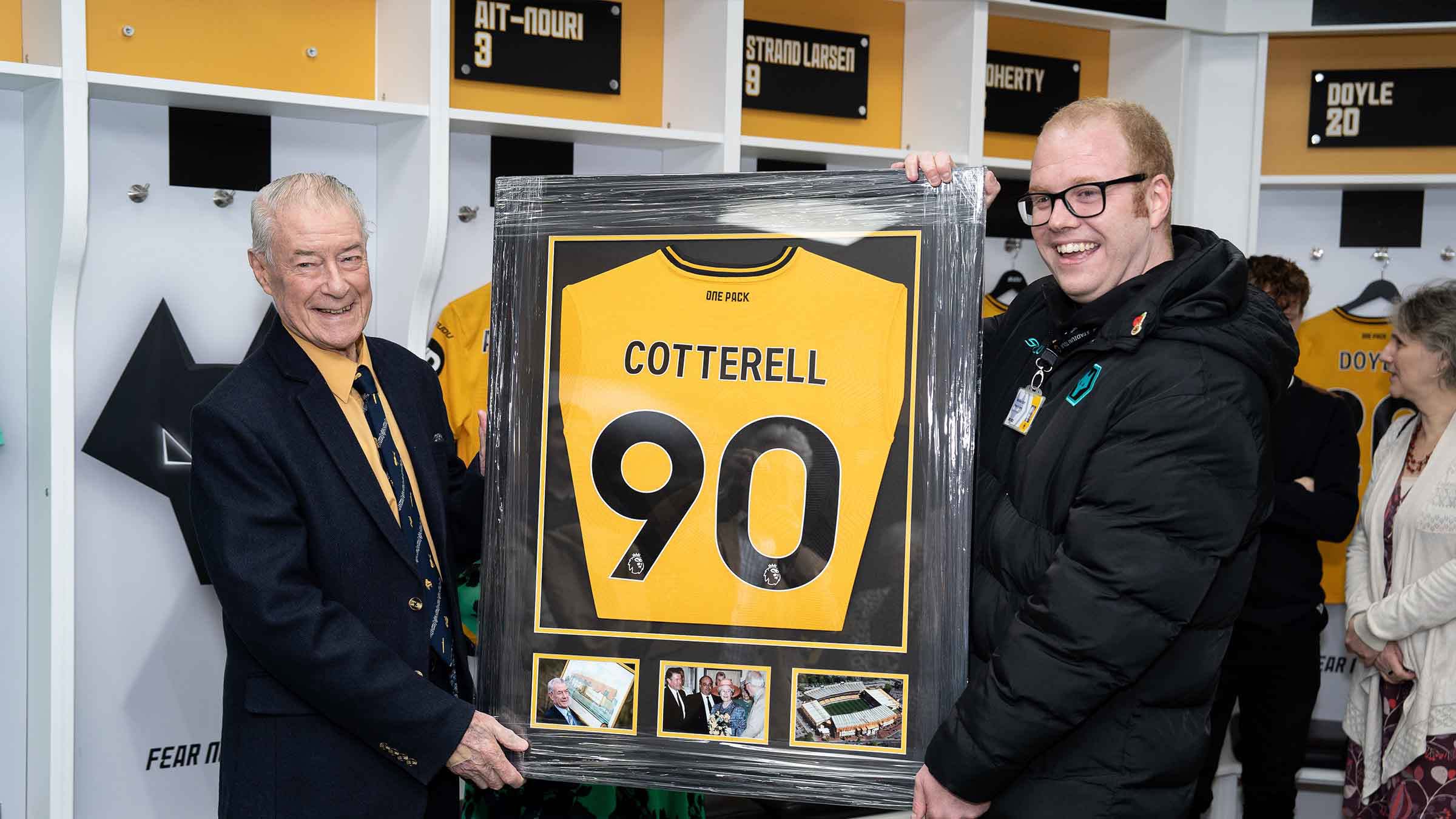
“We had the whole of Sir Jack’s Restaurant to ourselves. Wendy [Hobson, matchday manager] looked after us really well, and everyone was very kind and went out of their way to ensure we had the best day possible. I was absolutely gobsmacked and still haven’t got over it yet.
“It was an amazing day and the tour went down very well with our family. It was very sobering to be shown around.”
Looking back more than 30 years since the redeveloped stadium opened, Alan remains humble about his accomplishments and forever holds memories dear which are etched into the steel and soul of Molineux.
“I always remember something my grandfather told me when I was young. He said, ‘When you get old, Alan, there will be the good and the bad. The bad is that you’ll start to lose your friends – and at my age, you do – but the good is the memories you make along the way.’ And he was absolutely right. I have some wonderful memories, especially when it comes to the Wolves.
“When I look around Molineux now, I always think, ‘How was I the person to build this?’ I haven’t a clue how I did it, but it’s really marvellous.
“I still get people coming up to me now saying Molineux is the best stadium in the country, and this makes me incredibly proud.”


















